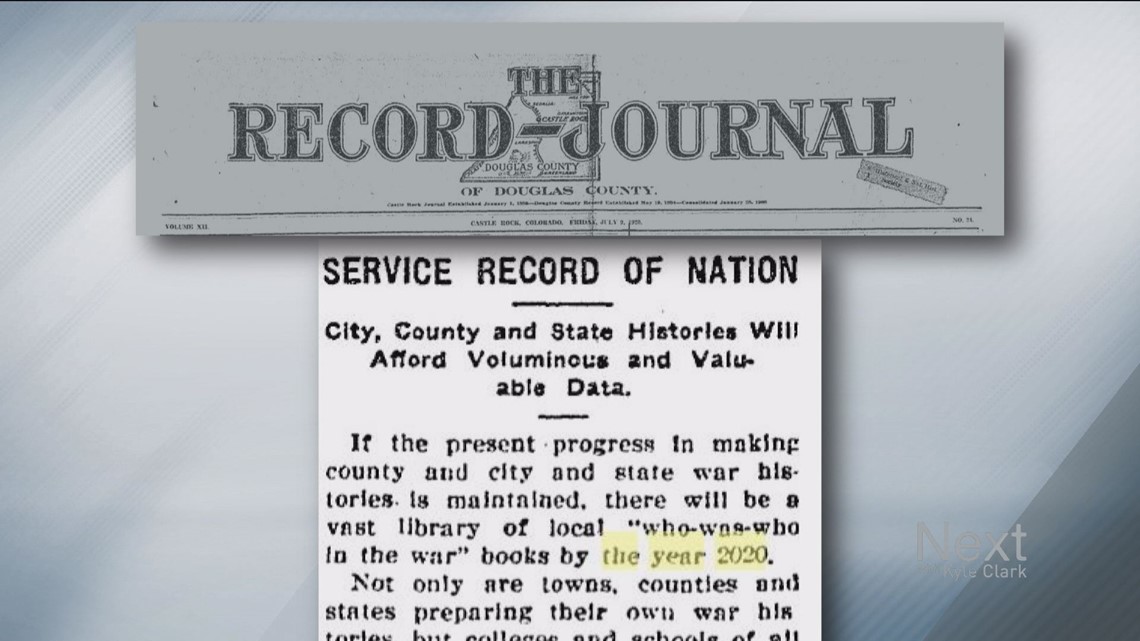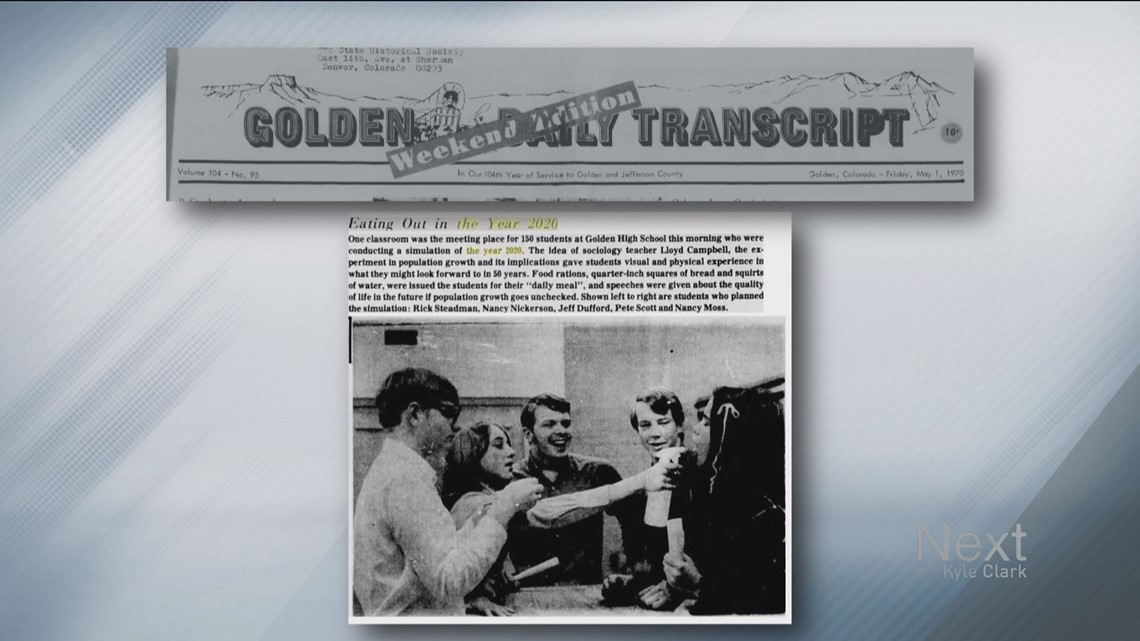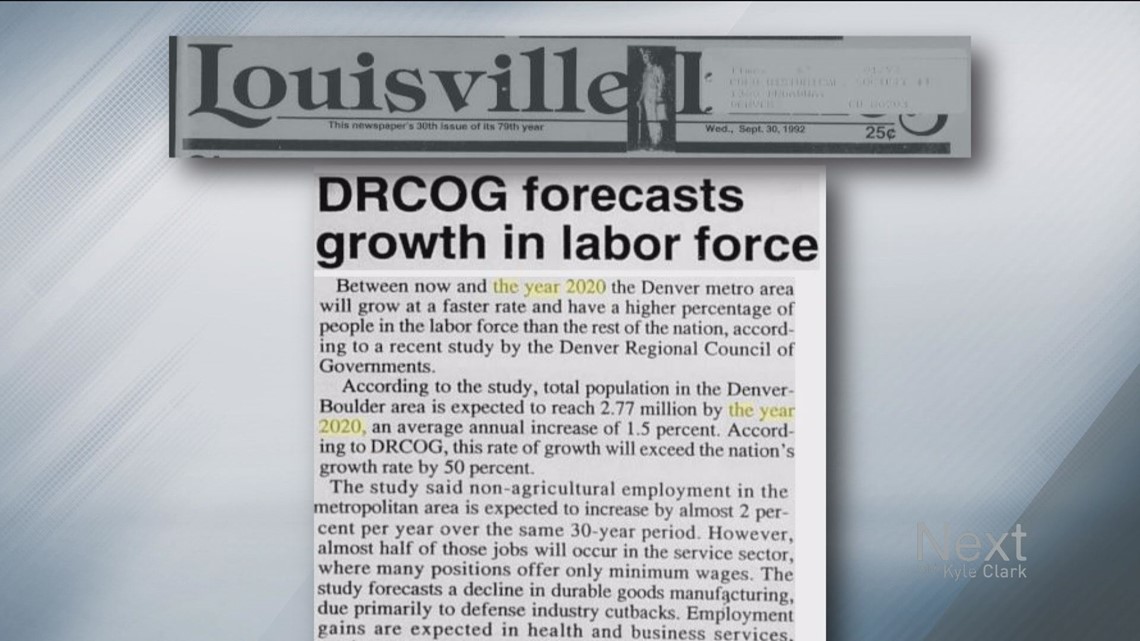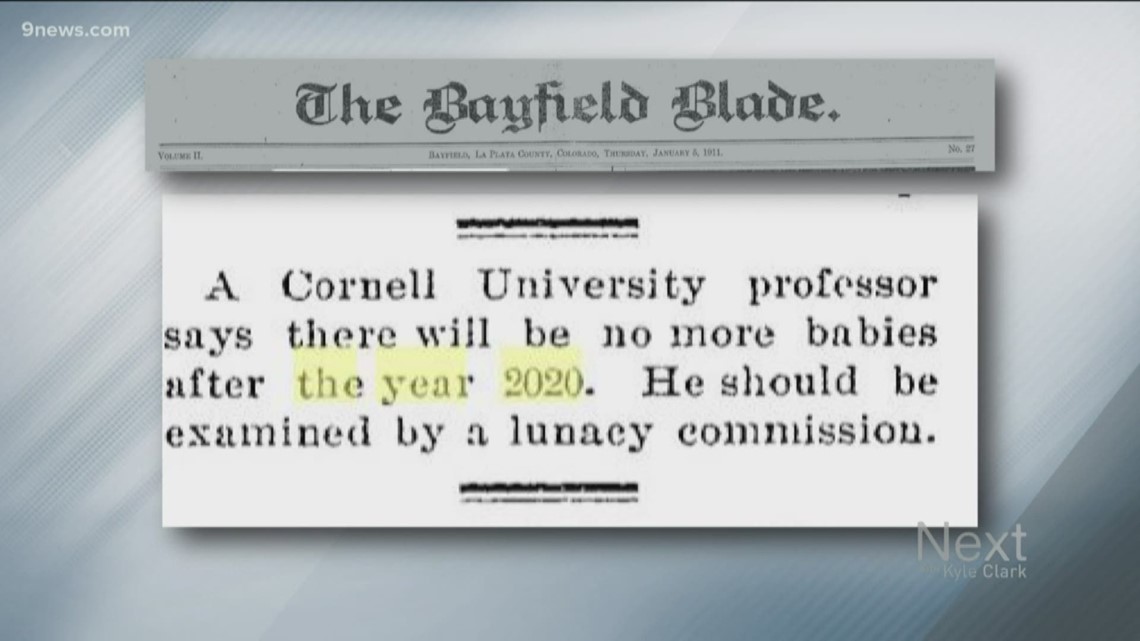DENVER — Back in 1911, a professor at Cornell University predicted that babies wouldn’t be born in the United States anymore.
“There will be no more children in the United States under 5 years of age in the year 2020. Babies accordingly, will have disappeared from this country as early as 2015. This is the mathematical conclusion of Professor Walter F. Wilcox of Cornell university, announced to the American Home Economic association yesterday afternoon… The only hope of seeing babies in the United States after 2020, according to Professor Wilcox’s calculation, is in possible importation from France.”
That’s an excerpt from a short article printed in the Wray Rattler on Jan. 6 of that year. The newspaper out of Yuma County was printed between 1886 and 1949. Readers now have the Wray Gazette.
Per that article, Wilcox also speculated that America's falling birth rate was race suicide. The Bayfield Blade, another paper out of La Plata County, wrote he “should be examined by a lunacy commission.”
The professor’s 2020 forecast flopped, as did a few other predictions printed in newspapers across Colorado. Others were almost eerily spot on.
Here’s a round-up of what we found:
JULY 9, 1920


About two years after World War I, an article in the Record Journal of Douglas County said libraries would build vast war histories of local participants over the next century.
“If the present progress in making county and city and state war histories is maintained, there will be a vast library of local ‘who was who in the war’ books by the year 2020. Not only are towns, counties, and states preparing their own war histories, but colleges and schools of all kinds also are getting up collective service records. Large industrial concerns are doing the same thing.
Enter, World Wide Web. The Denver Public Library has resources posted on its website for people to completely nerd out over the facts of the Great War. The National Archives' records are posted online, as well.
NOVEMBER 26, 1920
A Littleton High Schooler, Wayne Sims, wrote a story that ended up in The Littleton Independent. In it, he predicted a new invention that could go anyplace in the U.S. in three minutes -- anywhere in the world in 10.
“Never in my wildest dreams would I have imagined the change which I beheld… I was shown to an imposing subway station. My companion informed me that by this recently invented device anyone could go any place in the United States in three minutes and in ten minutes any place in the world.”
JUNE 9, 1968


The Colorado Transcript’s population prediction from 1968 was nearly perfect.
It said Colorado's population would explode to 5.4 million and that 90% of those people would live in a megapolis stretching from the Wyoming border to Trinidad.
Today, about 5.7 million live in Colorado with 85% on the Front Range.
JANUARY 1, 1970
A government scientist warned of climate change in 1970, as published by the Golden Transcript. Eugene K. Peterson with the Bureau of Land Management said glaciers would melt and temperatures would rise.
"Likely effects listed by Mr. Peterson include the following: a reduced flow of the Colorado River, intensifying the Southwest’s water problems; melting glaciers; less snow in the Western mountains; and fewer salmon in the Columbia River. If the use of coal and oil keeps rising at current rates, the carbon dioxide levels may be trebled and world-wide temperatures raised nine degrees within the next fifty years. The effects predicted by Mr. Peterson, it this happens, are correspondingly harsher virtual disappearance of snow from the U.S. mainland; an increase in earthquakes and volcanic eruptions; ocean levels some four feet higher; no ice in the Arctic Ocean for six months of every year, with drastic effects on weather in the northern hemisphere; and life in the tropics even more uncomfortable than it is now, but more pleasant weather in Alaska and Siberia. Of course, says Mr. Peterson, many of these symptoms will be seen before the year 2020. For instance, if present trends in carbon dioxide build-up continue. there should be measurable melting of glaciers by the end of this century."
MAY 1, 1970


Fears of a population boom had Golden High Schoolers in 1970 eating simulated rations from the year 2020 -- a cube of bread and squirt of water, also shared by the Golden Transcript.
"One classroom was the meeting place for 150 students at Golden High School this morning who were conducting a simulation of the year 2020. The idea of sociology teacher Lloyd Campbell, the experiment in population growth and its implications gave students visual and physical experience in what they might look forward to in 50 years."
AUGUST 18, 1977
It was 1977 when the U.S. Forest Service predicted Colorado's 6.6 million ski visits could double by 2020. The number was published in the Steamboat Pilot.
The guess was right -- 13.8 million in the 2018-2019 ski season.
"DOWNHILL SKI DEVELOPMENT - The Forest Service will encourage private industry to provide additional ' downhill- skiing opportunities emphasizing full development of existing winter sports sites in established resort areas. Where compatible with State and local government objectives, new sites will be permitted and existing sites expanded within 2 hours of high population Front Range cities. Utilization rates are expected to increase steadily and approach full practical capacity by 1995. Winter sports capacity could increase 65 percent by 1995 and double by the year 2020. Decisions on proposals for new, regionally significant sites, outside of established resort areas will be arrived at through a joint review process that provides for recommendations by State and local government. Small, day-use areas will be permitted where they will provide for local recreation needs. This program will continue to rely on private industry to construct and manage skiing facilities."
SEPTEMBER 30, 1992


The Louisville Times printed another solid population prediction 28 years ago.
The Denver Regional Council of Governments thought the Denver metro area would have a population of 2.77 million by now. At the end of 2019, it's right around 3 million.
"According to the study [from the Denver Regional Council of Governments], total population in the Denver Boulder area is expected to reach 2.77 million by the year 2020, an average annual increase of 1.5 percent. According to DRCOG, this rate of growth will exceed the nation’s growth rate by 50 percent."
OCTOBER 2, 1996
People are living longer, but not as long as Louisville financial planner Wayne Verra predicted in 1996. The Louisville Times shared what he wrote:
"In the year 2020, it is likely that 100 percent of the people who live to be 65 will live to be 90."
According to the Social Security Administration, men who live to 65 will reach 84, on average. Women will reach 86.5. But if you took Wayne's advice, at least you didn't run out of retirement money while you watched to see which 2020 predictions came true.
RELATED: Who's playing Red Rocks in 2020?
SUGGESTED VIDEOS | Full Episodes of Next with Kyle Clark

